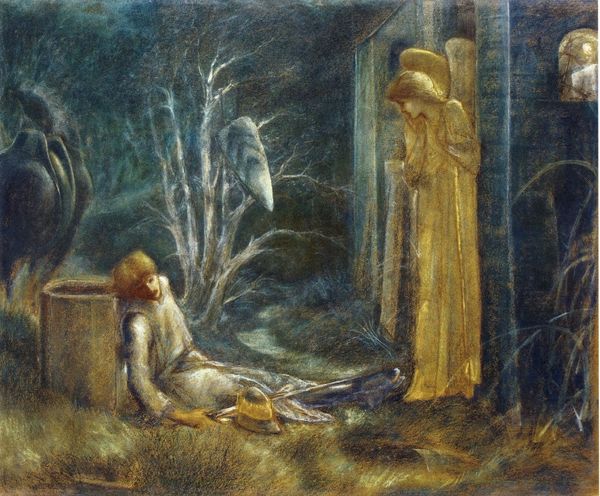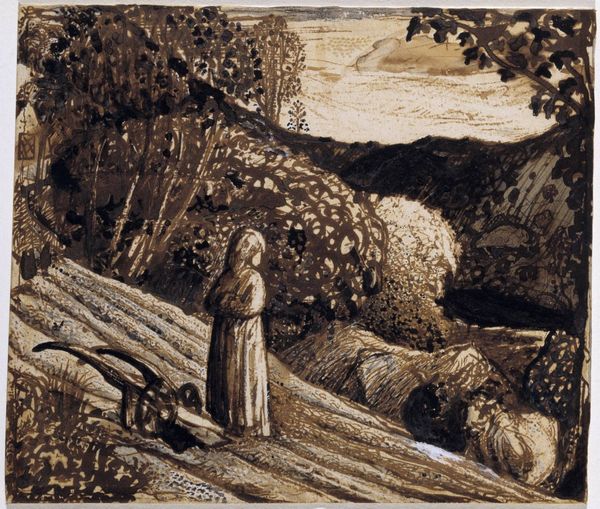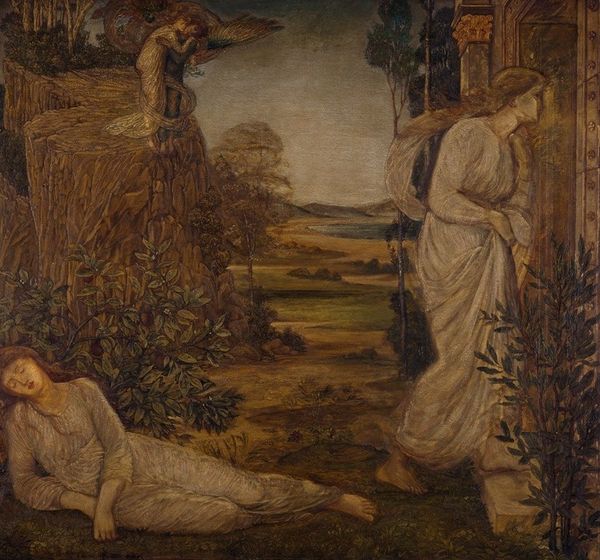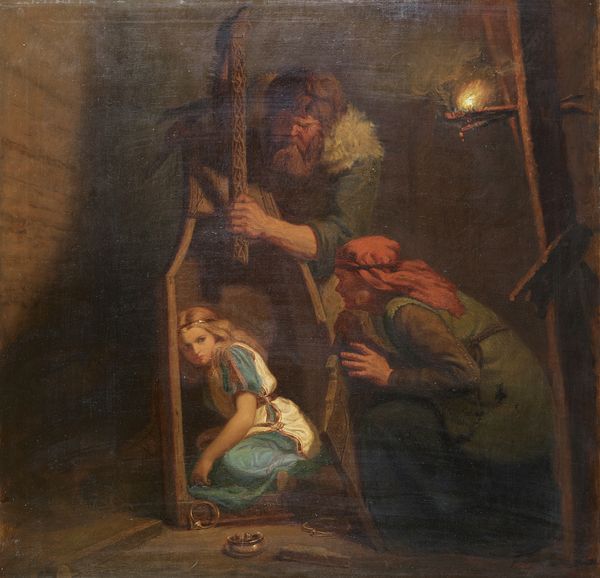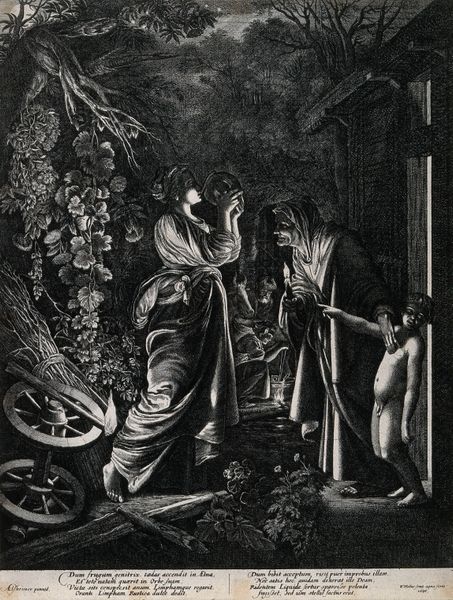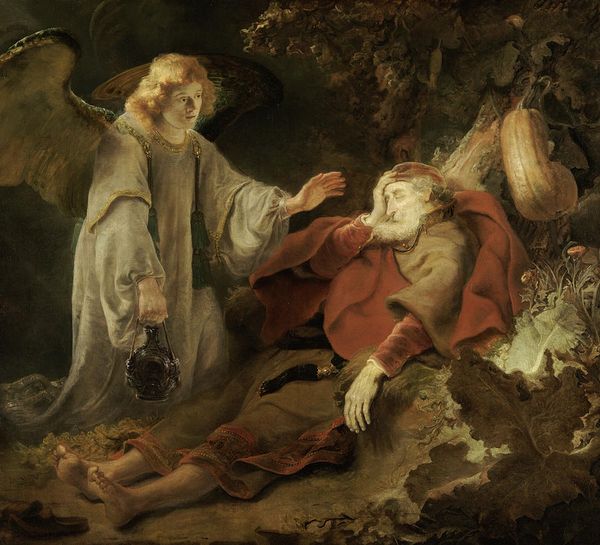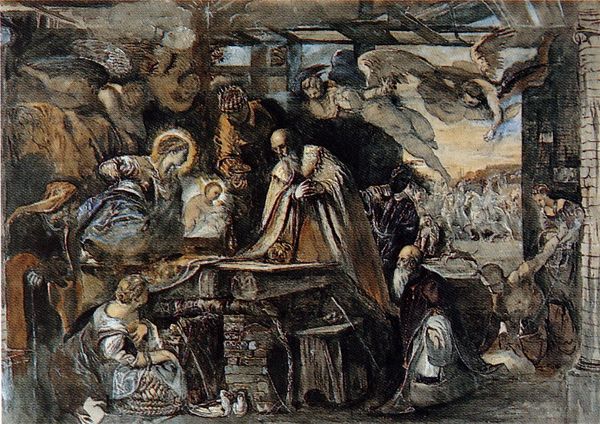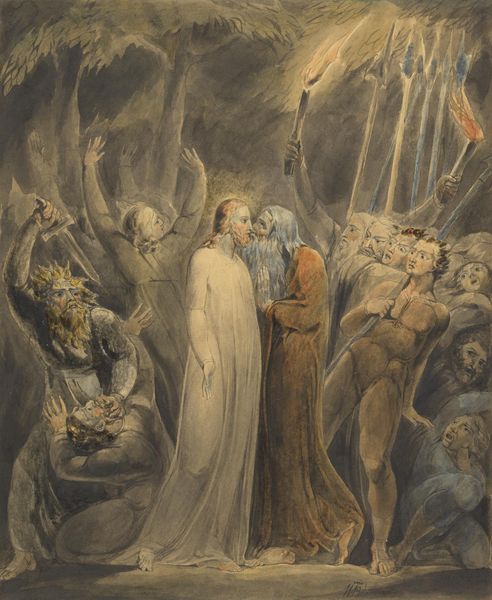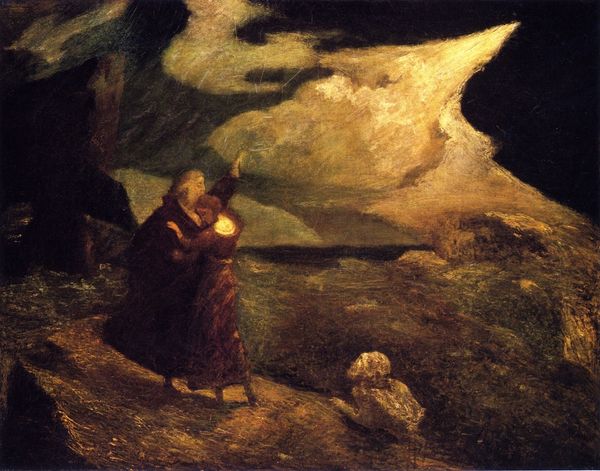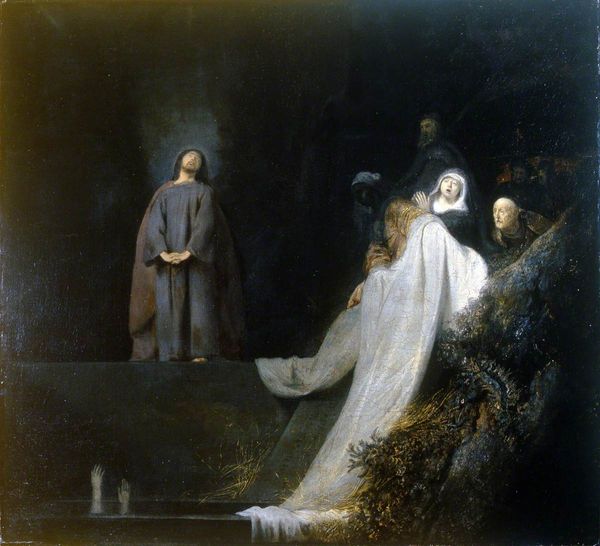
The Dream of Launcelot at the Chapel of the San Graal 1896
0:00
0:00
siredwardcoleyburnejones
Southampton City Art Gallery, Southampton, UK
painting, oil-paint
#
narrative-art
#
painting
#
oil-paint
#
landscape
#
figuration
#
charcoal art
#
oil painting
#
symbolism
#
history-painting
#
pre-raphaelites
Dimensions: 138 x 169 cm
Copyright: Public domain
Curator: Edward Burne-Jones painted "The Dream of Launcelot at the Chapel of the San Graal" in 1896, utilizing oil paint to depict a scene steeped in Arthurian legend. It is now located at the Southampton City Art Gallery in the UK. Editor: It looks like twilight in someone's dream. Melancholy, even a little forbidding. The palette is limited to these subdued grays and browns. Launcelot looks exhausted... defeated, almost. Curator: That subdued palette is typical of the Pre-Raphaelites, reflecting a kind of moral seriousness but also a visual aesthetic—a romantic longing for a past that likely never existed. This particular scene comes from Malory's "Le Morte d'Arthur". The entire image is built around the figure of Launcelot, isn’t it? Editor: Absolutely, sprawled there almost like a fallen statue with the presence of the Holy Grail nearby. A figure stands next to the castle...Is it an angel? It creates this poignant sense of unattainable holiness. Burne-Jones knew how to construct images of yearning, didn’t he? It seems his aim wasn't to retell a story as much as distill its essence of hope and longing. Curator: Exactly. Notice the detail placed not only in Launcelot's armor but the Angel's garb also. These details were critical to evoking feelings tied to morality. This echoes the thematic thread pervasive throughout Burne-Jones’ narrative pieces, wherein figures embody both tangible forms and intangible ideas, such as the dichotomy between earthly flaws and ethereal ideals. Editor: It does leave you thinking, doesn't it? We are stuck on Earth when it seems holiness lies just a door away from us. Curator: It evokes a universal question, especially with its dreamlike state. Can any of us be perfect enough for divinity? Thank you for giving me a new perspective. Editor: And thank you, for your art-historical knowledge, which helped to contextualize and enrich our feelings around it. It seems appropriate for something dealing with knights and legends.
Comments
No comments
Be the first to comment and join the conversation on the ultimate creative platform.
